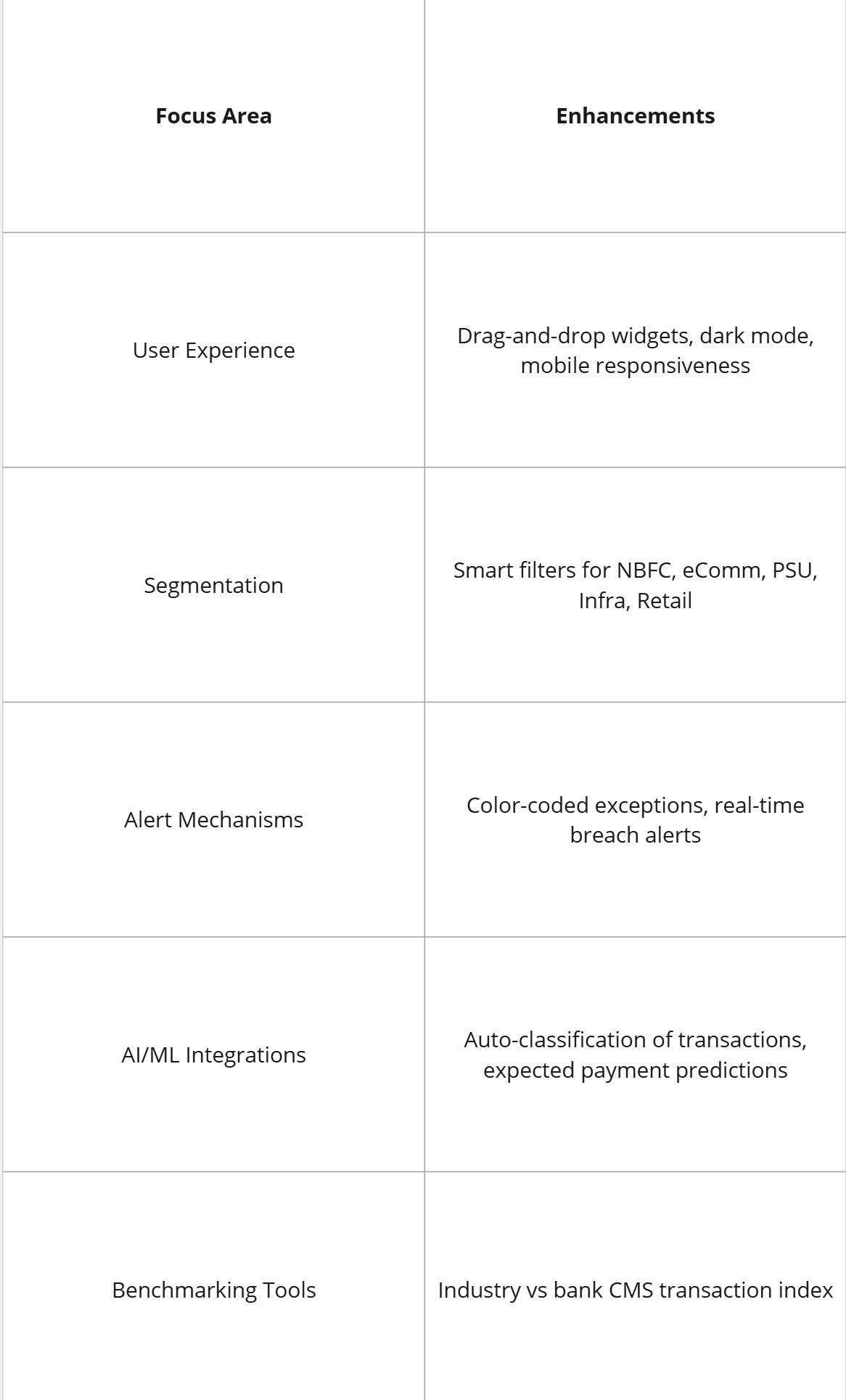In the evolving narrative of Cash Management Services (CMS) in India, dashboards are no longer just operational control panels — they’re strategic command centers. Chapter 2 of the India CMS Handbook 2025 deep-dives into how leading banks structure their CMS dashboards, what key metrics they prioritize, and how those dashboards reflect their maturity in cash management for corporates.
Based on a curated review of real CMS dashboard screenshots from top banks including HDFC Bank, Axis Bank, YES Bank, Kotak Mahindra Bank, IndusInd Bank, and IDFC FIRST Bank, we decode the design philosophy, functional intelligence, and adaptability embedded in these interfaces.
Why CMS Dashboards Matter More Than Ever
CMS clients — whether from NBFCs, eCommerce, PSUs, or FMCGs — now expect real-time visibility into cash flows, faster reconciliations, and smarter alerts. A modern CMS dashboard is expected to offer:
KPI clarity at a glance
Channel-level breakdowns (NEFT, RTGS, IMPS, UPI)
Collections vs Disbursement intelligence
User-defined views, filters, and alerts
Role-specific customization
Comparative Breakdown: Bank-Wise Dashboard Intelligence
HDFC Bank
Visual Tone: Corporate blue with minimalist layout
Key Features: Pie and bar charts for collections/disbursements
Notable Element: Quick KPIs for volume and value
Recommendation: Add sectoral filters and exception highlights
Axis Bank
Style: Data-dense with strong channel focus
Key Features: Payment types split (RTGS/IMPS/NEFT)
Intelligence Level: Operationally robust
Recommendation: Introduce YoY/MoM trend markers with alert symbols
Kotak Mahindra Bank
Design: Compact and modern
Unique Aspects: Collection mapping by product category
Strength: Readiness for industry-specific views
Recommendation: Add predictive alerts and client sector toggles
YES Bank
UI Style: Sidebar navigation, client-centric summaries
Core Utility: Flexible views for custom client dashboards
Potential: Strong modular design foundation
Recommendation: Enable custom threshold breach alerts
IndusInd Bank
Design: Visually rich with dark themes
Analytics Focus: Real-time inflow-outflow metrics
Ideal For: Enterprise clients requiring high-velocity monitoring
Recommendation: Add cash position vs ageing overlays
IDFC FIRST Bank
UI Philosophy: Clean, simplified dashboards
Primary Use: Straightforward KPI review
Strength: Speed, clarity
Recommendation: Enhance with time filters and smart anomaly detection
Framework: The 6-Pillar CMS Dashboard Intelligence Model
To benchmark and build next-gen CMS dashboards, the following framework is useful:
Suggested Enhancements for 2025-ready CMS Dashboards
Closing Thoughts
As India's CMS ecosystem matures, dashboards will become the competitive differentiator for banks. A well-designed CMS dashboard doesn’t just inform — it empowers decision-making, reduces turnaround times, and builds confidence across treasury functions.
In the next chapter, we will dive into bank-wise CMS deep dives, analyzing how each private and public sector bank structures its CMS product stack and delivery mechanisms.
📍Next Up: Chapter 3 – Bank-by-Bank Deep Dive into CMS Capabilities






